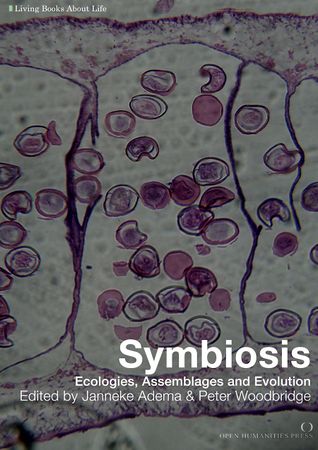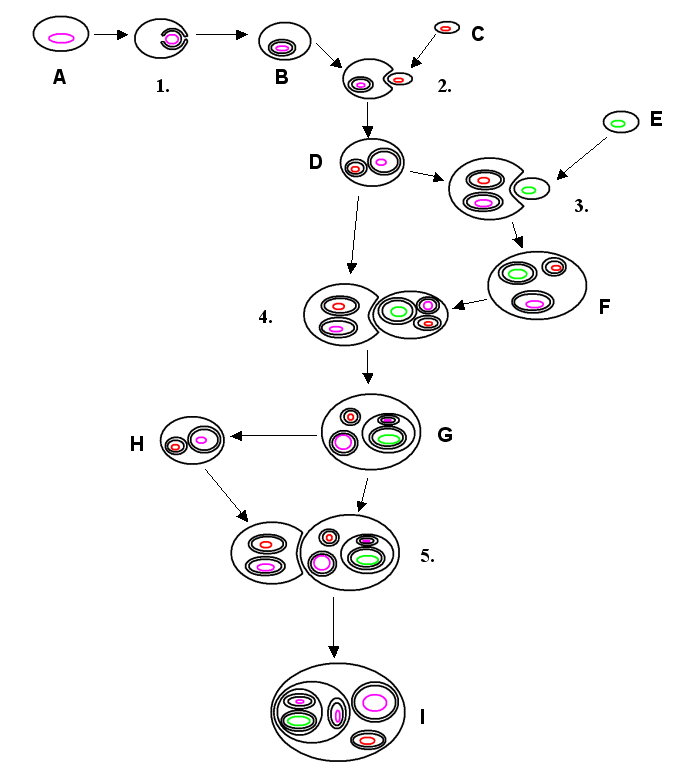Symbiosis

Ecologies, Assemblages and Evolution
edited by Janneke Adema and Pete Woodbridge
Introduction: Symbiosis as a Living Evolving Critique
Different species, interacting in a symbiotic fashion, living together over a prolonged period of time, eventually co-evolving into new species: this vision of the biological phenomenon of symbiosis has created a strong impression—both of symbiosis as a metaphor and a material reality—of species in an intimate relationship together, cooperating in spite of differences, of becoming something else and transgressing boundaries. This idea has turned the concept of symbiosis, in its many guises and definitions, into a breeding ground for a posthuman, biologically and ecologically informed critique. Less focused on the biological process of symbiosis as such, our focus in Symbiosis: Ecologies, Assemblages and Evolution is more on how symbiosis can be used as a means to argue for an alternative worldview and even a better world.... (more)
Symbiosis and Evolution
- Watson, R. A. and Pollack, J. B.
- How Symbiosis Can Guide Evolution
- Fabio Lucian and Samuel Alizon
- The Evolutionary Dynamics of a Rapidly Mutating Virus within and between Hosts: The Case of Hepatitis C Virus
- Wired Science
- Green Sea Slug Is Part Animal, Part Plant
Endosymbiosis
- Jian Xu, Michael A. Mahowald, Ruth E. Ley et.al.
- Evolution of Symbiotic Bacteria in the Distal Human Intestine
- Jennifer J. Wernegreen
- Endosymbiosis: Lessons in Conflict Resolution
Symbiogenetics
- Lynn Margulis
- Symbiogenesis and Symbionticism
- Ivan Emmanuel Wallin
- Symbionticism and the origin of species (1927)
Symbiosis and Ecology
Community Ecology
- Jos C. Mieog, Jeanine L. Olsen, Ray Berkelmans et.al.
- The Roles and Interactions of Symbiont, Host and Environment in Defining Coral Fitness
Biodiversity and complexity
- Christina Toft, Tom A. Williams, and Mario A. Fares
- Genome-Wide Functional Divergence after the Symbiosis of Proteobacteria with Insects Unraveled through a Novel Computational Approach
Interdependence
- Timothy Morton – Thinking Ecology: The Mesh Part 1
- Timothy Morton –
- Thinking Ecology: The Mesh Part 2
- Timothy Morton –
- Thinking Ecology: The Mesh Part 3
Life Systems and Gaia Hypothesis
- Fritjof Capra
- The Turning Point: Chapter on the Systems View of Life
- Stephen B. Scharper
- The Gaia Hypothesis. The world as a living organism
- Timothy Morton
- Lynn Margulis, Symbiosis, Ethics Track 30 of Literature and the Environment
- Lynn Margulis, Stephen Buhner and John Seed
- Activism, Deep Ecology & the Gaian Era
Media Ecologies
- Matthew Fuller
- Media Ecologies
Symbiosis and Posthumanism
Human/Machine Symbiosis
- J.C.R. Licklider
- Man-Computer symbiosis
- Gerwin Schalk
- Brain-Computer Symbiosis
Symbiotic Intelligence
- David E. Moriarty and Risto Miikkulainen
- Forming Neural Networks Through Efficient and Adaptive Coevolution
- Norman L. Johnson and S. Rasmussen
- Symbiotic Intelligence and the Internet: A Deeper Overview
Human-animal hybrids, chimeras and symbiosis
- Anant Bhan, Peter A Singer, and Abdallah S Daar
- Human-animal chimeras for vaccine development: an endangered species or opportunity for the developing world?
Machinic assemblages: Bugs, machines and viruses
- Susan Schuppli
- Of Mice Moths and Men Machines
- Jussi Parikka
- Digital Monsters, Binary Aliens – Computer Viruses, Capitalism and the Flow of Information
Symbiosis and Augmentation
- Justin C. Sanchez, Babak Mahmoudi, Jack DiGiovanna, Jose C. Principe
- Exploiting co-adaptation for the design of symbiotic neuroprosthetic assistants
- Mitchell Whitelaw
- Andy Gracie: Symbiotic Circuits
- Melinda Rackham
- Carrier becoming symborg
- Melinda Rackham and Damien Everett
- Carrier (becoming symborg)
- Christian Bök
- The Xenotext Experiment

